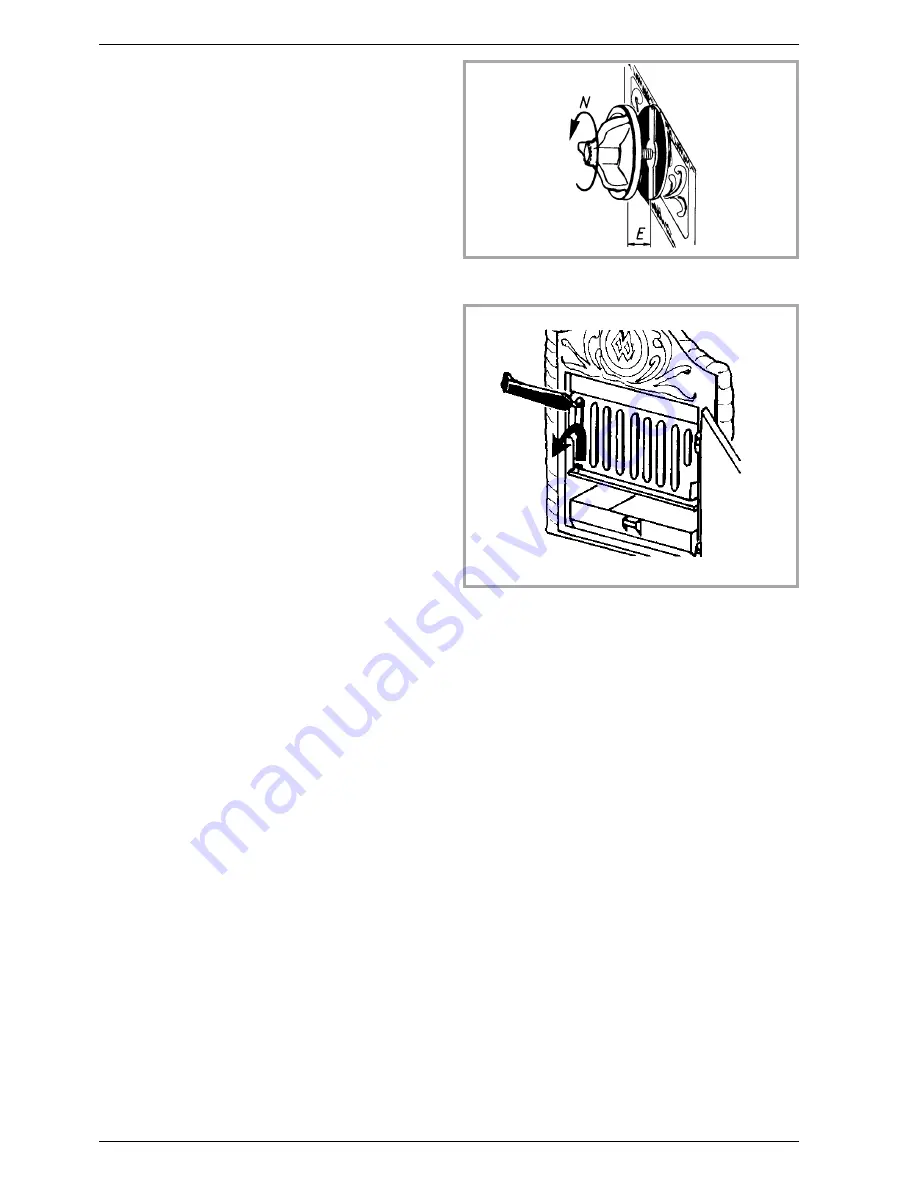
3.2. Lighting your stove
Your Parisienne stove is designed to be a very efficient
heating appliance. Therefore, the majority of the heat
created by burning fuel on it is radiated into the room
rather than disappearing up the chimney, as is the case
with an open fire.
There is a side effect of this gain in efficiency which can
be a nuisance to you as the user but can be easily
avoided if, when lighting your stove from cold, the
chimney is heated up as quickly possible. This will
create an up-draught which is required to pull air
through the stove which in turn burns the fuel. The
easiest way to produce this column of air moving is to
open the air inlet wheel on maxi, use paper or fire
lighters and small pieces of wood in order to achieve a
fast burning fire with little smoke and plenty of flames.
This will push heat up the chimney and start the draught
working. Now you can put solid fuel on the stove
because the increased smoke emission will be drawn
up the chimney instead of trying to escape into the
room. Remember the seals on your stove are there to
prevent air from being drawn into the stove, thus
allowing control of the burning rate by adjustment of the
air inlet, not to stop smoke escaping into the room. If
smoke is escaping into your room then, either your are
not operating it correctly or there is a chimney draught
problem. This may be cured by sweeping or you may
need the advice of a chimney expert.
Note :
When refuelling your stove, if it is burning very
slowly, the same advice will apply as for lighting from
cold.
3.3. Air inlets
Primary combustion air enters via the rotating control
on the front door of the stove (fig. 7). You will discover
by experience how much to open this control,
depending on your particular chimney draught and fuel
used.
However, as a guide, start with the following :
For 124 03 01 :
•
Lighting
- Unscrew 12 turns (N) from the fully closed
position, (E = 20 mm)
•
Normal
- Unscrew 1,5 turns (N) from the fully closed
position, (E = 3 mm)
•
Slumbering
- Unscrew 1 turn (N) from the fully closed
position, (E = 2 mm).
For 124 05 01 :
•
Normal (wood)
- Unscrew 2 turns (N) from the fully
closed position, (E = 4. Mm)
•
Normal (Anthracite)
- Unscrew 6 turns (N) from the
fully closed position, (E = 10. Mm)
Lasting burning cycle :
•
Nominal output (Anthracite) :
124 03 01 = 94 mn
124 05 01 = 109 mn
•
Nominal output (wood) :
124 03 01 = 57 mn
124 05 01 = 48 mn
Warning
: On no account should the front ash door be
left open as this could cause overheating of the stove
an damage to the grates.
3.4. Maintenance
Daily
- Shake the grate, - Empty the Ash Pan. Do not
allow ash to build up under the grate when burning solid
fuel as this will cause overheating and damage to the
grate.
Periodically
- Clean out the flue ways. Sweep the
chimney at least once a year but more frequently if
necessary. The frequency of any cleaning depends
upon the fuel being used. Remember, gases from
combustion are dangerous and blocked flue ways force
those gases into your room, so do be particular when
cleaning the flue ways.
Check the rope seals now and again and replace if
necessary.
Never use water to clean the stove or glass.
Never burn plastic, rubber, waste etc. This causes
pollution of the stove, chimney and environment.
Note
: The appearance of cracks when burning the
enamelled units is quite usual and tends to disappear
when the appliance is cooling down. It should not be
considered as a defect but rather as a patina of the
enamel which does not affect its quality nor its service
ability.
This crackling is more apparent with the blue enamel
than with the brown and green.
8
Technical manual “286”
The Parisienne - ref. 124 03 01 - 124 05 01
Operating instructions
Figure 7 - Air control
Figure 8 - Front grate
































